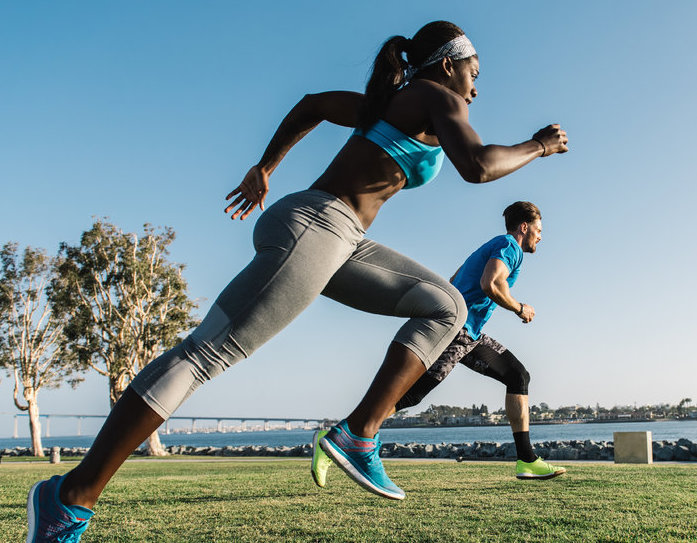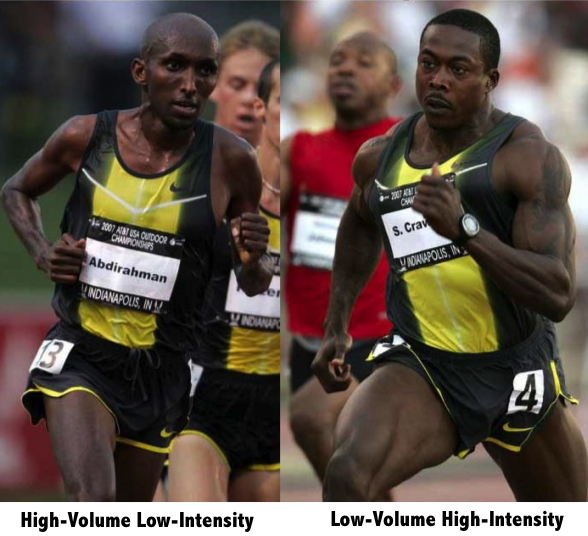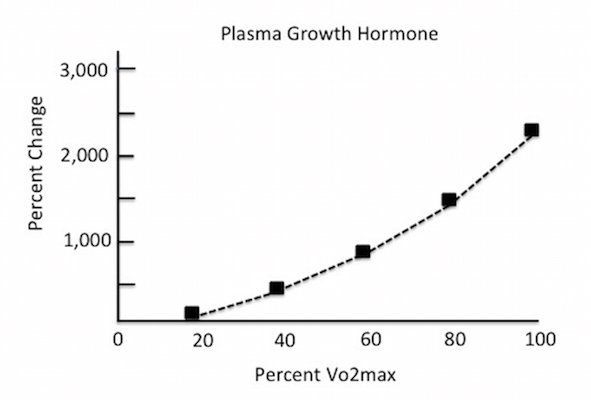When it comes to fat loss, there’s something to be said about the practice of going ‘all out.’ For instance:
Research from 2014 in the European Journal of Endocrinology determined that maximal exercise increases a fat burning hormone called irisin (turns white fat to brown) 34% higher than a matched workload with a lower intensity.

Vigorous activity also appears to do a better job activating hormone-sensitive lipase, which is responsible for stimulating fat burning. For example:
In a 2008 study in the International Journal of Obesity researchers compared high-intensity interval (8-sec sprints) and moderate-intensity endurance training over 15 weeks, and despite equal cardiovascular improvements, only saw significant reductions in total fat mass, trunk fat, and fasting insulin levels in the high-intensity group.
So, even though steady-state aerobic activity may burn more calories and fat during exercise, vigorous activity leads to greater energy expenditure and lipolysis after exercise…
…among other things.

Now, whether this is driven by higher levels of EPOC (1, 2), or fat-burning enzymes and muscle building hormones (gH, testosterone), is debatable. But research has made it quite clear that short-term high-intensity exercise leads to superior reductions in fat loss.
Evidence from 2008 in the journal Obesity found significant decreases in total fat mass, visceral belly fat (-9.5%), and fasting insulin (-31%) for a group of women taking part in high-intensity interval exercise, compared to an aerobic group that gained fat mass (0.44kg) and visceral belly fat (10.5%), and experienced far less of a reduction in fasting insulin (9%).

Some have suggested that this increased fat burning is the result of structural and chemical changes to skeletal muscle DNA – as these genetic changes (not seen in less intense activity) reprogram the muscle for strength building and fat burning almost immediately. For instance:
Research in the European Journal of Applied Physiology determined that a 15-min session of HIIT activated 310 genes, compared to only 69 after a 30-minute aerobic session (and missing 16 fat metabolism specific genes).
Though the other likely contributor (to this accelerated fat loss) is growth hormone (GH) – as it’s also tied to the intensity of exercise (1, 2), and can increase by nearly 25 times what it is at rest with an all-out intensity.

Interestingly, aside from burning fat and being an anabolic (muscle-building) hormone on it’s own, GH facilitates the increase and uptake of IGF-1 (insulin-like growth factor). Which other than stimulating MPS (muscle protein synthesis), satellite cells (1, 2), and receptors that initiate hypertrophy (muscle gain), it’s arguably the reason low-volume high-intensity exercise (HIIT) is able to preserve muscle….
…unlike it’s CARDIOvascular catabolic cousin (1, 2, 3).
Stay Lean!
Coach Mike
RELATED ARTICLES:
Cardio = The Worst Investment Ever?
Intensity = Lift More Weight NOT Lift Weight More
The 5 Best HIIT (High-Intensity Interval Training) Combos
The Elderly Should Train For Strength & Muscle NOT Endurance
Exercise Intensity (HIIT) Trumps Exercise Duration (Cardio) for Disease Prevention
